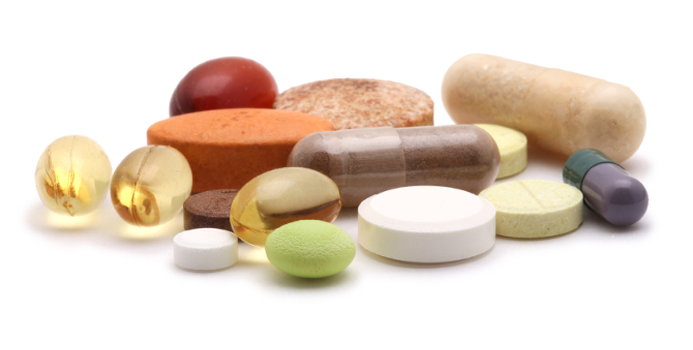Vitamin E products have evolved from a product based on alpha-tocopherol to complete formulas that are bio-enhanced, non-GMO and derived from vegetable oils.


Vitamin E products have evolved from a product based on alpha-tocopherol to complete formulas that are bio-enhanced, non-GMO and derived from vegetable oils.


Researchers in Peru found that vitamin E deficiency in individuals was associated with an increased risk of contracting tuberculosis from household members with tuberculosis. As such, they recommend assessing the vitamin E status of these individuals and possibly providing vitamin E supplementation to help curb the spread of tuberculosis.
Chronic hyperglycemia induces impairment of muscle growth and development of diabetes mellitus (DM). Since skeletal muscle is the major site for disposal of ingested glucose, impaired glucose metabolism causes imbalance between protein synthesis and degradation which adversely affects physical mobility. In this study, we investigated the effect of tocotrienol-rich fraction (TRF) supplementation on skeletal muscle damage in diabetic mice. Diabetes was induced by a high-fat diet with streptozotocin (STZ) injection (100 mg/kg) in male C57BL/6J mice. After diabetes was induced (fasting blood glucose levels≥250 mg/dl), normal control (CON) and diabetic control (DMC) groups were administrated with olive oil, while TRF treatment groups were administrated with TRF (dissolved in olive oil) at low dose (100 mg/kg BW, LT) or high dose (300 mg/kg BW, HT) by oral gavage for 12 weeks. TRF supplementation ameliorated muscle atrophy, plasma insulin concentration and homeostatic model assessment estimated insulin resistance in diabetic mice. Moreover, TRF treatment up-regulated IRS-1 and Akt levels accompanied by increased translocation of GLUT4. Furthermore, TRF increased mitochondrial biogenesis by activating SIRT1, SIRT3 and AMPK in diabetic skeletal muscle. These changes were in part mechanistically explained by reduced levels of skeletal muscle proteins related to oxidative stress (4-hydroxynonenal, protein carbonyls, Nrf2 and HO-1), inflammation (NFkB, MCP-1, IL-6 and TNF-α), and apoptosis (Bax, Bcl₂ and caspase-3) in diabetic mice. Taken together, these results suggest that TRF might be useful as a beneficial nutraceutical to prevent skeletal muscle atrophy associated with diabetes by regulating insulin signaling via AMPK/SIRT1/PGC1α pathways in type 2 diabetic mice.
Non-alcoholic fatty liver disease (NAFLD) is a growing public health problem worldwide and is associated with increased morbidity and mortality. Currently, there is no definitive treatment for this disease. δ-Tocotrienol has potent anti-inflammatory and antioxidant properties and may reduce liver injury in NAFLD. The present study aims to evaluate the efficacy and safety of δ-tocotrienol in the treatment of NAFLD.
The present study was a randomized, double-blind, placebo-controlled pilot study conducted in patients aged > 20 years, belonging to both sexes, having ultrasound-proven fatty liver disease, having a fatty liver index (FLI) of ≥ 60, and persistent elevation of alanine transaminase. A total of 71 patients were assigned to receive either oral δ-tocotrienol (n=35, 300 mg twice daily) or placebo (n=36) for 12 weeks. At the baseline and at the end of the study, clinical and biochemical parameters, including lipid profile, liver function tests, high-sensitivity C-reactive protein (hs-CRP), and malondialdehyde (MDA) were measured. Body mass index and FLI were calculated, and ultrasound grading of hepatic steatosis was performed.
Out of 71 enrolled patients, 64 patients, 31 in the δ-tocotrienol group and 33 in the placebo group, completed the study. After 12 weeks of supplementation, δ-tocotrienol showed greater efficacy than placebo by decreasing serum aminotransferases, hs-CRP, MDA, and FLI score (p<0.001). However, it did not improve hepatic steatosis on ultrasound examination. No adverse effects were reported.
δ-Tocotrienol was safe, and it effectively improved aminotransferase levels and inflammatory and oxidative stress markers in patients with NAFLD. Large-scale randomized clinical trials are warranted to further support these findings.
You all must have heard that Vitamin E is healthy and should be an important part of your diet. However, the reason may not be known to everyone. Well, you just checked into the right place to find your answers!
Tocopherol is one of the 2 members of the vitamin E family. The other member is known as tocotrienol. Vitamin E incorporates 8 different compounds. These include 4 tocopherols (alpha, beta, gamma and delta) and 4 tocotrienols (alpha, beta, gamma and delta). Both of them require fat in the diet in order to be absorbed and distributed within the body. Although it may seem like the two members are similar, various differences exist between them as outlined below.

Suffering from stress-induced gastritis? Palm vitamin E may be the solution. Studies on the use of this vitamin in rats have shown that it reduces stress-induced gastritis. The rats, which were pre-treated with palm vitamin E, had gastritis induced in them following the stress of being immersed in water.
They are a source of energy and nutrients for our bodies, as well as antioxidants that protect our cells against the effects of free radicals and help to reduce inflammation. These are the good oils that should form a small but essential part of our daily diet. While there are many types of oils out there, an excellent one in our very own backyard is palm oil, which contains a high level of vitamin E.
Hair fall is a pain. Blame it on our lifestyles, pollution or rampant stress but losing hair is one of the greatest beauty concerns that most women are dealing with today. There are hundreds of miracle products that promise quick hair growth and reducing hair fall but how many can you really vouch have worked for you? That’s probably because most of these products miss one important ingredient that actually stimulates hair growth and can give you the voluminous movie siren hair you have always wanted. We are talking about vitamin E, the most effective and essential ingredient for hair growth.
Higher blood levels of Vitamin E may be linked to a lower risk of gallstone disease, finds a recent study published in Nutrients.
